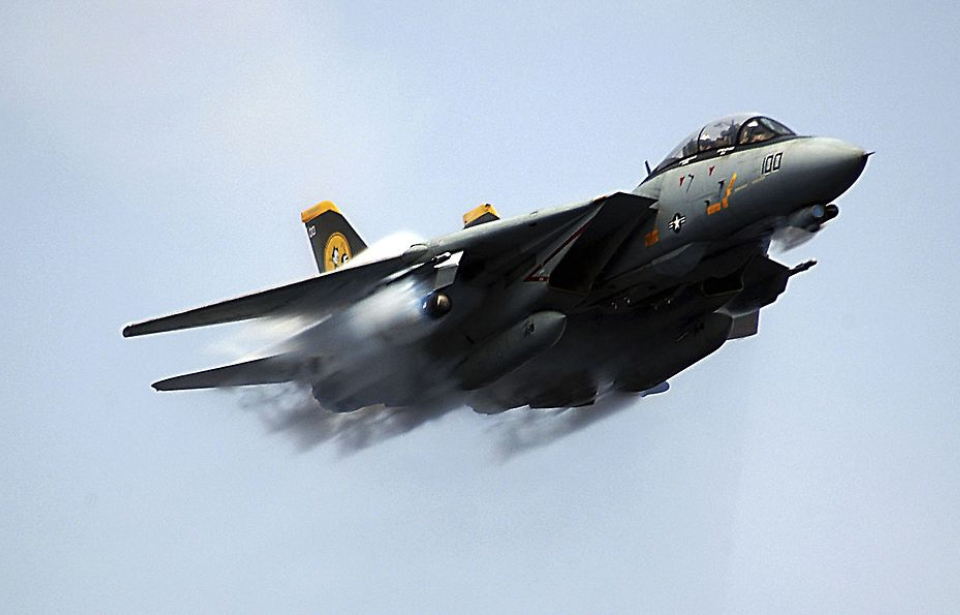In the world of aviation, the marriage of beauty and function has birthed stunning creations, with aesthetics and power being held in equal regard. From their sleek, streamlined profiles to the roaring might of their engines, these aircraft are more than just mere machines; they’re pieces of art, each one an embodiment of humanity’s indomitable spirit and thirst for discovery. In this article, we pay homage to 12 of the most beautiful military aircraft ever developed.
North American P-51 Mustang
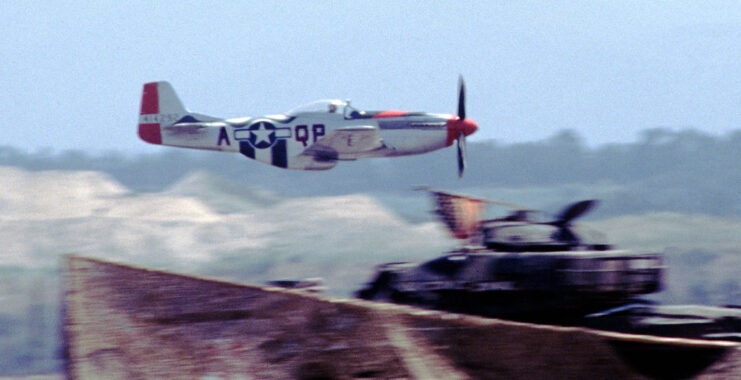
Crafted in the throes of World War II, the North American P-51 Mustang emanates an air of audacity, and is arguably one of the most beautiful military aircraft to have ever been developed. Its sleek design belies the ruggedness within, while its distinctive invasion stripes whisper tales of daring sorties over enemy territory.
The P-51’s vibrant roar as its Rolls-Royce Merlin engine revs up is a stirring overture to its impressive performance.
Lockheed SR-71 Blackbird
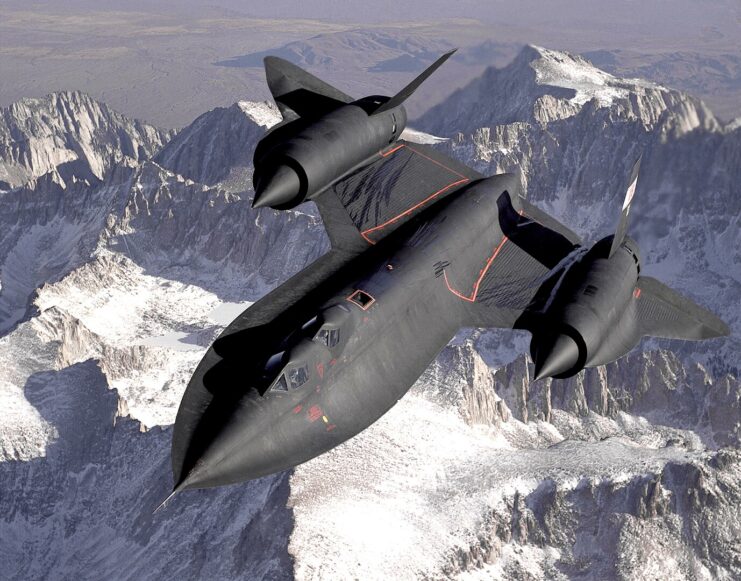
Emerging from the depths of the Cold War, the Lockheed SR-71 Blackbird is an ode to technological prowess and ingenuity. Its enigmatic, obsidian silhouette exudes a futuristic appeal, while its unprecedented speed and high altitude performance still hold records, years after its retirement.
The SR-71 is more than just an aircraft – it’s an enduring legend.
Fairchild Republic A-10 Thunderbolt II
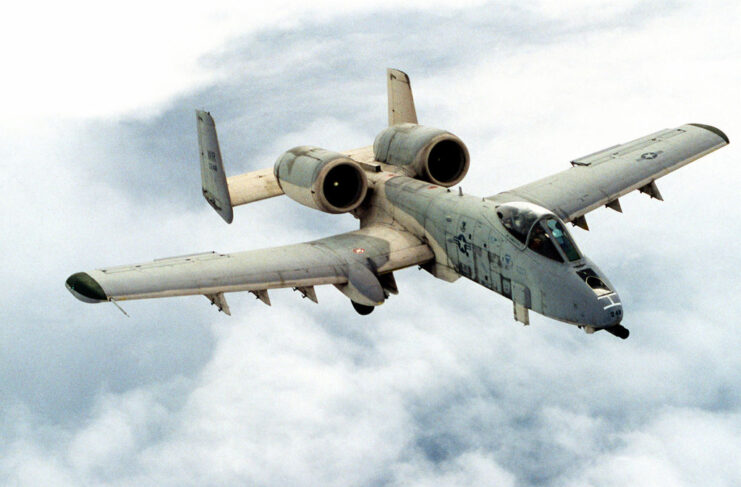
The Fairchild Republic A-10 Thunderbolt II – affectionately known as the “flying tank” and A-10 Warthog – captivates many with its brutish charm. While not conventionally beautiful, this military aircraft’s unusual design, characterized by its frontal cockpit and giant rear-mounted engines, is a testament to its indomitable spirit.
ound-attack aircraft.
de Havilland DH.98 Mosquito
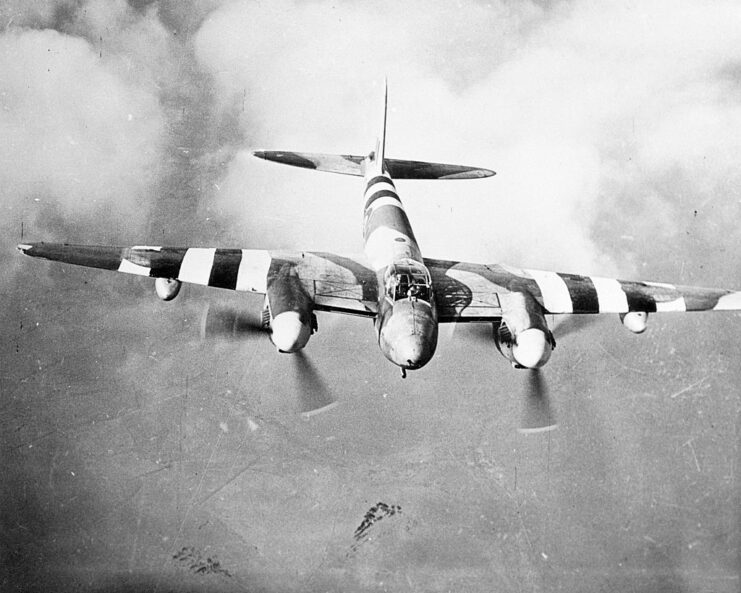
The de Havilland DH.98 Mosquito, also known as the “Wooden Wonder,” combined speed, maneuverability and firepower in an elegant package. Crafted almost entirely from wood, its lightweight design and twin-engine setup made it one of the fastest and most versatile aircraft of the Second World War.
Avro Vulcan
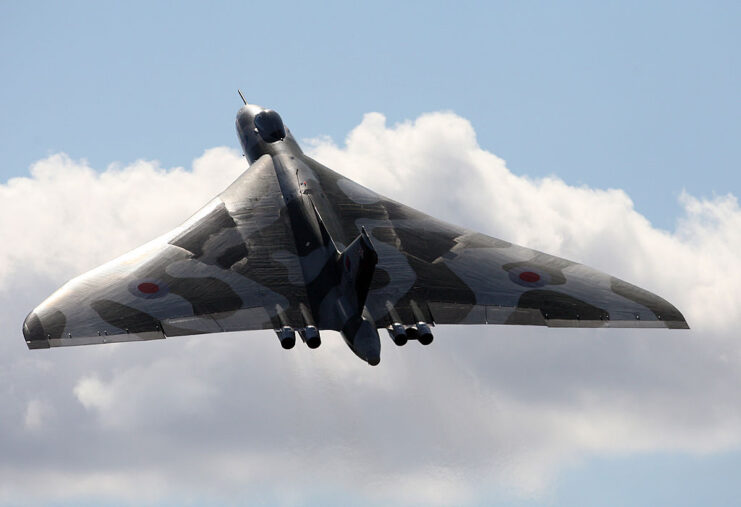
The Avro Vulcan, an iconic symbol of Britain’s Cold War might, exhibits an ethereal beauty with its distinctive delta-wing design. The sight of its colossal form, coupled with the unearthly howl of its engines, is truly awe-inspiring. From nuclear deterrence to conventional bombings during the Falklands War, the Vulcan took on many roles throughout its illustrious career.
Grumman F-14 Tomcat
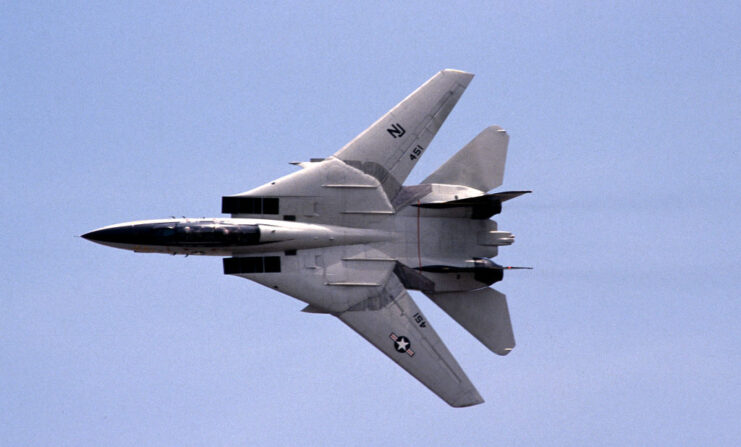
The Grumman F-14 Tomcat is the embodiment of American air superiority, and one of the most beautiful military aircraft to have ever taken to the sky. Its variable-geometry wings and twin-tail design imbue it with a predatory elegance.
Star of the 1986 film, Top Gun, the F-14’s grace and might in aerial combat have earned it a place in the annals of aviation history.
Supermarine Spitfire
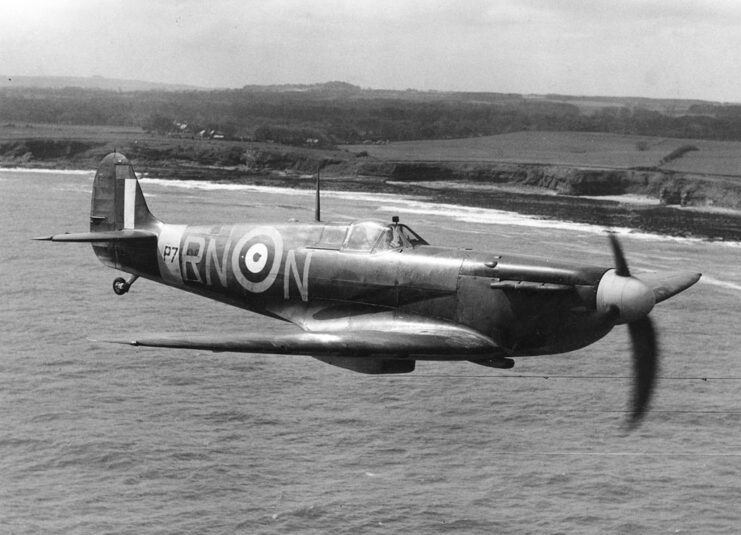
With its elliptical wings and growling Merlin engine, the Supermarine Spitfire was a symbol of British resistance during WWII. Its agile performance and distinctive silhouette have etched it into the public consciousness as an icon of freedom against tyranny.
North American XB-70 Valkyrie
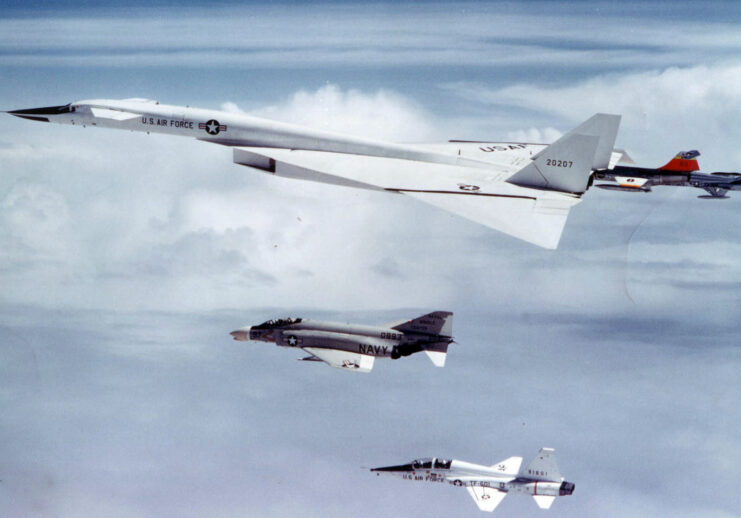
The North American XB-70 Valkyrie was the embodiment of futuristic beauty, despite being a prototype military aircraft. This supersonic bomber, with its sleek, streamlined form and distinctive canards, was years ahead of its time.
Its visions of speed and altitude as defensive attributes continue to influence aviation design philosophy.
Saab J35 Draken
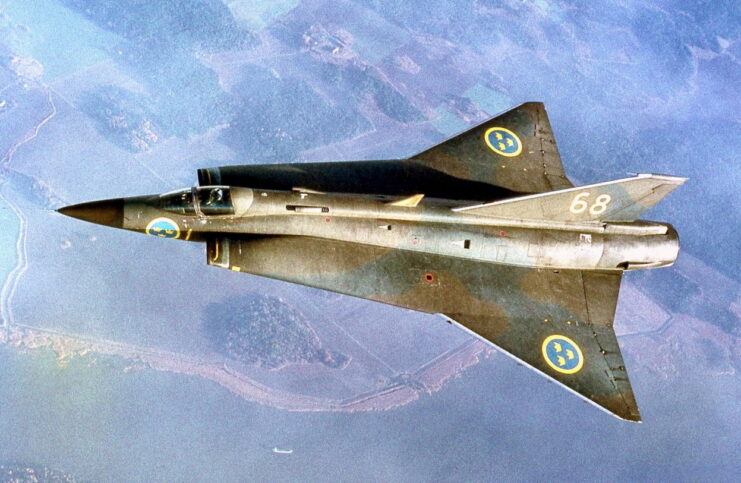
The Saab J35 Draken, a Swedish supersonic interceptor, boasts a distinct appearance, with its double-delta wing configuration and canard design. Its unique look, while striking, makes it a standout, in terms of performance. The sharp edges that mark its wings allow the aircraft to achieve the perfect balance of low-speed stability and high-speed execution.
The J35’s design also allows it to perform the famed Cobra Maneuver, in which the aircraft becomes its own airbrake, showing its impressive maneuverability.
McDonnell Douglas F-4 Phantom II
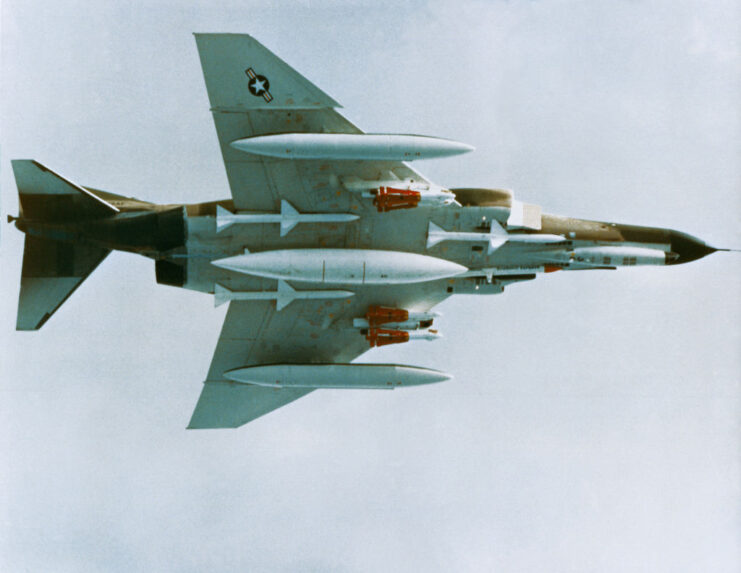
The McDonnell Douglas F-4 Phantom II, with its tandem twin-seat and unmistakable dihedral tail, is a testament to robust and versatile design. Serving in numerous conflicts, most notably the Vietnam War, and adopted by air forces across the world, the aircraft’s legacy is as extensive as its capabilities.
Lockheed P-38 Lightning
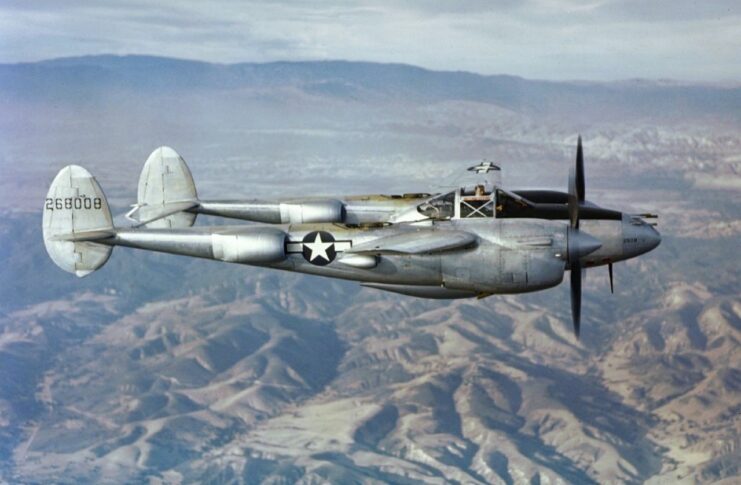
The Lockheed P-38 Lightning, with its unconventional twin-boom design and propellers that rotated in opposite directions, was as striking as the bolt of lightning it was named after – talk about a beautiful military aircraft. During WWII, it redefined what a fighter aircraft could achieve.
Lockheed Martin F-35 Lightning II
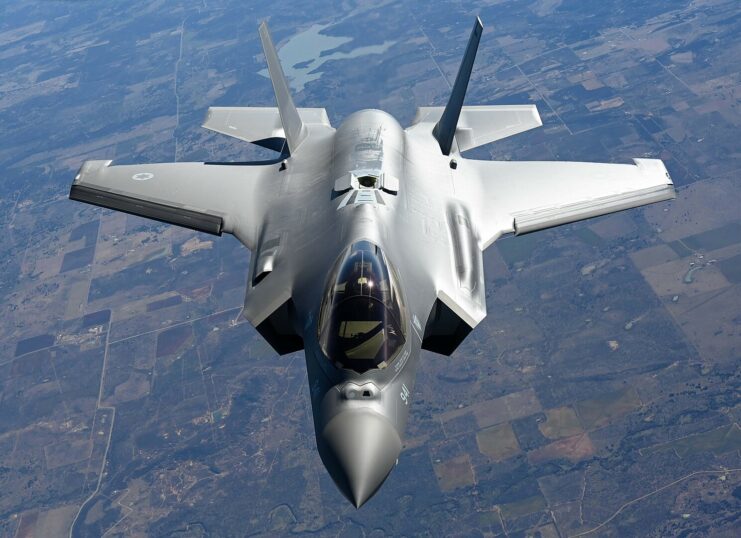
The Lockheed Martin F-35 Lightning II represents the cutting edge of aerial warfare. With its stealth features, sensor fusion and advanced avionics, it ushers in a new era of fifth-generation fighters that are capable of taking on just about anything. Its single-engine design and angular lines embody modernity and might.
Vought F4U Corsair
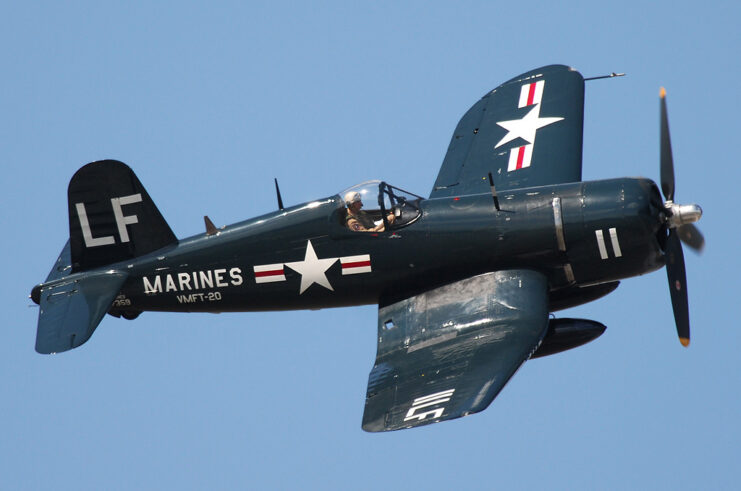
The Vought F4U Corsair, nicknamed the “Whistling Death,” is known for its bent-wing design and distinctive gull-shaped wings, combining functionality with an undeniable charm. Its aggressive stance and powerful performance add to its allure.
As a carrier-based aircraft during the Second World War, it gained a reputation among the Japanese as the most formidable fighter flown by the Americans in the Pacific Theater. The F4U also served throughout the Korean War as a fighter-bomber, where it took on enemy Yakovlev Yak-9s.
North American F-86 Sabre
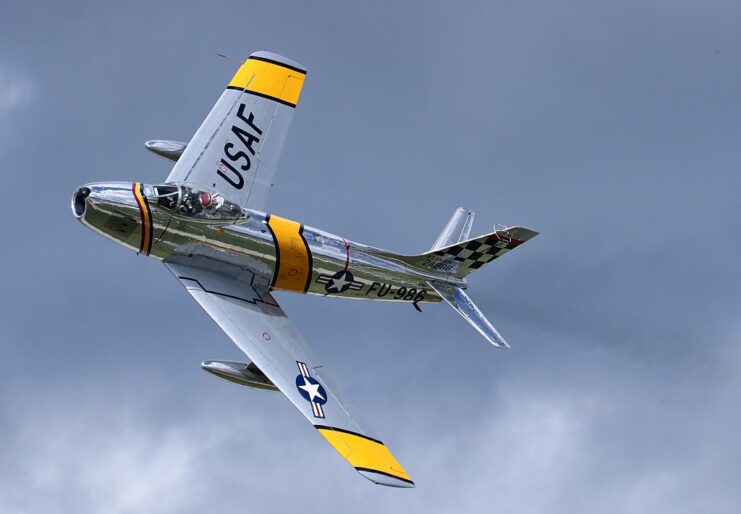
The North American F-86 Sabre is the epitome of classic jet-age aesthetics, and is without a doubt one beautiful (some might even say gorgeous) military aircraft. Renowned for its swept wings and elegant lines, it was the West’s counter to the Soviet Mikoyan-Gurevich MiG-15 during the Korean War.
The F-86’s beauty is matched only by its historic role in pioneering transonic flight.
